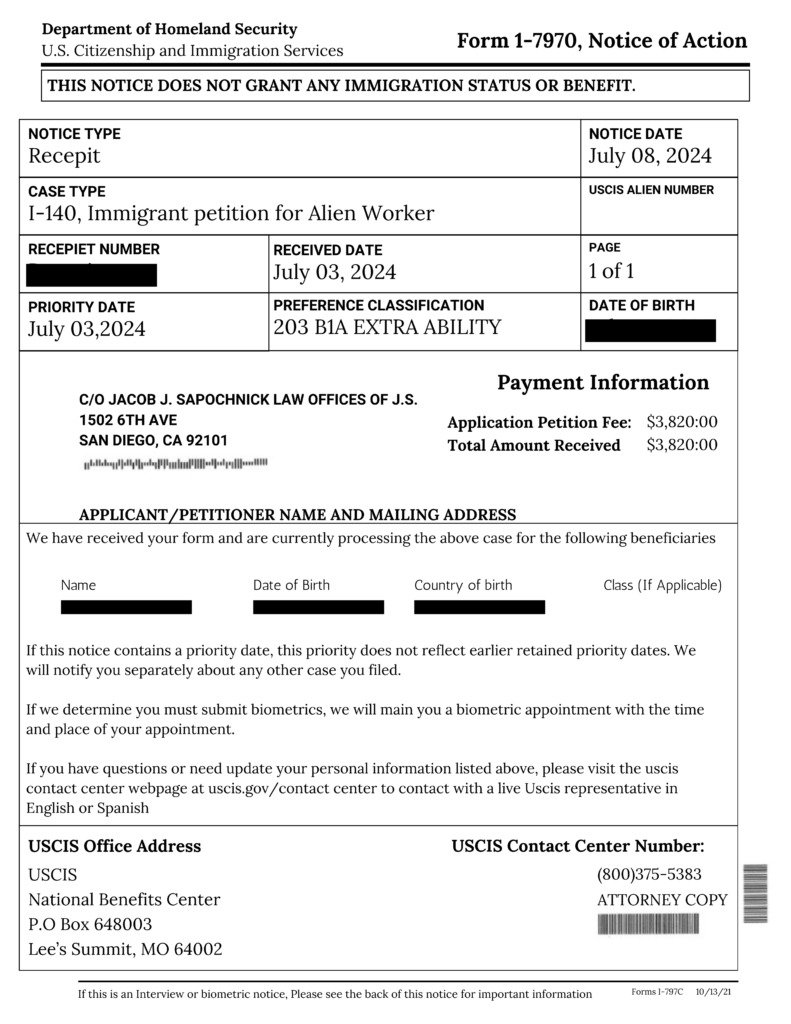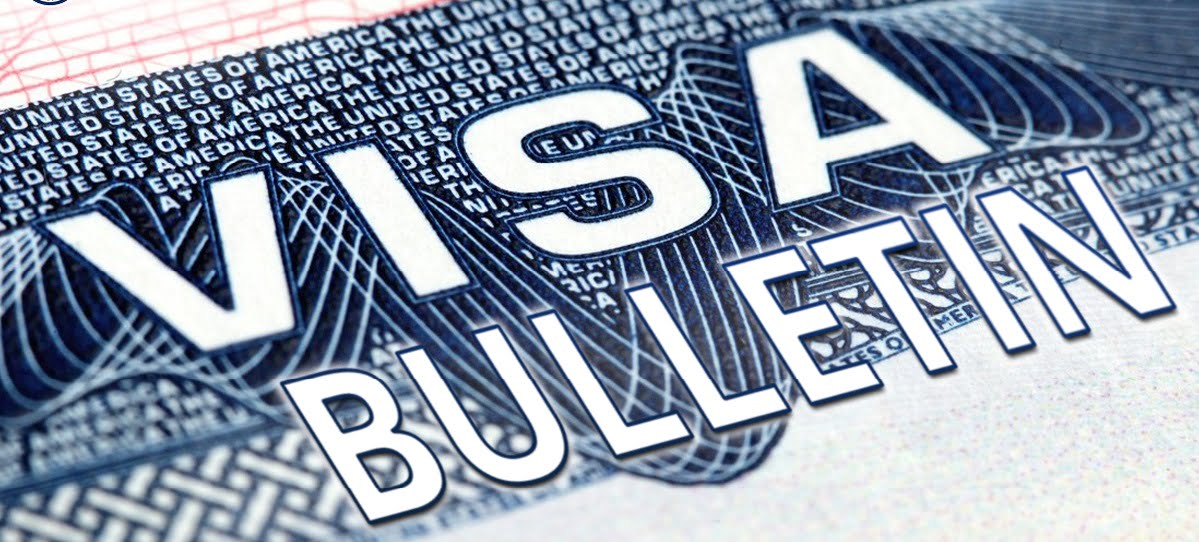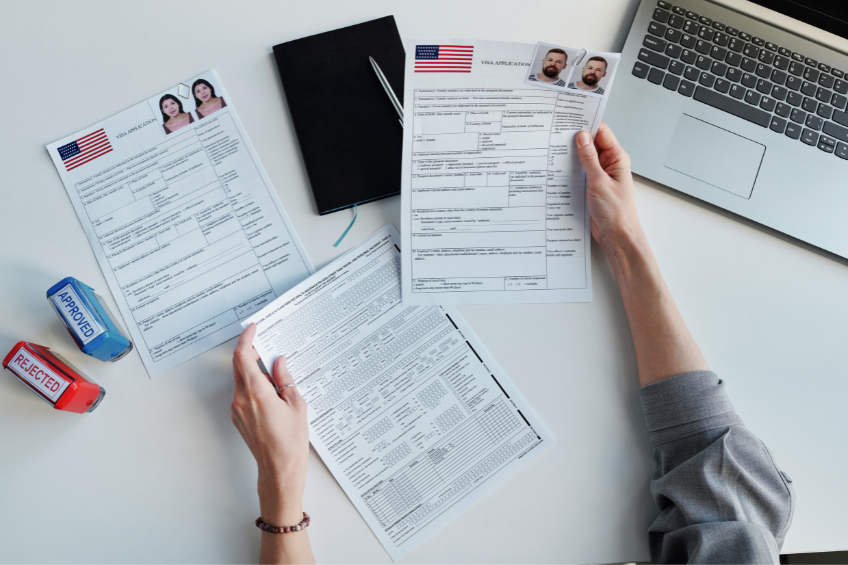Introduction
Navigating the world of immigration can be complex, especially when it comes to understanding your priority date on the I-797 Notice of Action issued by the U.S. Citizenship and Immigration Services (USCIS) in connection with your immigrant visa petition (e.g. Form I-130, I-140, I-360, or I-526).
Knowing the priority date for your immigrant visa petition is crucial to determining when a visa number is available and when you can proceed with your green card application process. Generally found on the USCIS receipt notice for your immigrant petition, your priority date will indicate your place in line in the queue for visa availability.
The cutoff dates for visa availability are reported every month in the Department of State’s Visa Bulletin, which dictates when a visa number is available based on per-country limitations, the number of visas allocated to your preference category, demand for and supply of immigrant visas.
While this article provides valuable insights, remember it does not constitute legal advice. For personalized assistance with your immigration situation, please consult an immigration attorney. If you would like to speak with our lawyer, our customer care representative will happily arrange a call for you.
Understanding the I-797 Receipt Notice
The Form I-797 Notice of Action plays an essential role in the immigration process. It is used to communicate important information to applicants and petitioners regarding their immigration applications and the status of their cases. There are various different types of Form I-797 notices which serve different purposes throughout the immigration process. The following guide will help explain each notice and how to use it to determine your priority date.
Types of Form I-797 Notices
The Form I-797 has several variations, each having a separate purpose in the immigration process:
- Form I-797: This is the standard Notice of Action issued by USCIS as a receipt or approval notice. It confirms that USCIS has received or approved your application. Most importantly, this notice identifies your priority date which is the date your immigrant petition was originally filed with USCIS.
- Form I-797A: Form I-797A replaces Form I-94, which serves as the arrival and departure record for non-citizens. Generally, this notice is issued when an individual has obtained a visa approval while residing in the U.S. An applicant can continue their stay in the U.S. through the specified date listed on the I-94 that is located at the bottom portion of Form I-797A. The replacement I-94 functions as evidence of the applicant’s lawful presence in the United States.
- Form I-797B: The I-797B is issued when a worker petition has been approved by the U.S. Citizenship and Immigration Services (USCIS). It is reserved for employees who will process their visas at a U.S. Embassy, Consulate overseas, or a designated port of entry. The bottom portion will contain the petition’s validity dates and indicate that the noncitizen worker will apply for his or her visa at a U.S. Consulate or Embassy abroad.
- Form I-797C: This form is used for various purposes by USCIS, including notifying applicants of the receipt of their applications, interview appointments, reopened cases, rejections, and more.
- Form I-797D: Generally, Form I-797D is accompanied by benefit cards that explain the benefits associated with an approval, such as a work permit or green card.
- Form I-797E is a Request for Evidence (RFE) issued when USCIS needs more information about a pending case. This notice includes the deadline for submitting the required information before a final decision can be made.
- Form I-797F: Form I-797F is a Transportation Letter that U.S. permanent residents can use to enter the U.S. if their green card is lost, stolen, or mutilated.
Essential Information on Form I-797 Receipt Notices
Once your immigrant petition has been filed with USCIS, you will receive a standard Form I-797 receipt notice, or Form I-797C receipt notice of action, which will contain important information that you need to pay attention to like:
- Receipt Number: This number will allow you to track the status of your case with USCIS and must be used when contacting USCIS to inquire about your case status.
- Case Type: The case type helps specify the type of petition filed.
- Priority Date: Generally, the priority date on the I-797 receipt notice determines the applicant’s place in line for visa availability. However, there is an exception for applicants who have filed a PERM Labor Certification with the Department of Labor (see more on this below).
- Applicant Information: In general, this will include the name and address of the applicant and/or petitioner.
- Deadlines: For certain types of I-797 notices, like I-797E Requests for Evidence, the notice will also include important instructions and deadlines.
Understanding and maintaining a record of your I-797 receipt notice is very important not only because it confirms the filing of your application with USCIS, but also because it contains your ‘priority date,’ which indicates your place in line while waiting for green card availability.
What is a Priority Date?
A priority date is the date an immigrant petition is originally filed with USCIS which begins the green card process. For a person filing under an employment-sponsored green card, this is the date the PERM Labor Certification is filed with the Department of Labor (DOL).
For persons filing an employment-based green card under a category exempt from Labor Certification (such as self-petitioners filing EB-1A or EB-2 National Interest Waivers), this date is established when the I-140 petition is filed with USCIS.
For family-based cases, this is the date the qualifying relative files the I-130. Accordingly, the I-797 receipt notice for an I-130 or I-140 petition will contain your priority date.
To determine your place in line in the visa queue you must regularly review the U.S. Department of State (DOS)’s monthly Visa Bulletin which lists the priority dates for each category based on per-country limitations, the number of visas allocated to your preference category, and demand for and supply of immigrant visas. The Visa Bulletin will help you understand your place in line in the visa queue according to your priority date.

Overview of How Priority Dates Are Assigned
How priority dates are assigned varies depending on the type of immigration petition. Here is a summary of how priority dates are assigned to various different classes of immigrants to guide you in finding your priority date.
- Family-sponsored immigration: The priority date is determined by the date the USCIS receives the completed Form I-130 or Form I-360.
- Employment-based immigration: The priority date can vary based on specific circumstances:
- If labor certification is required, the priority date is assigned when the Department of Labor accepts the labor certification application for processing
- If labor certification is NOT required, the priority date is given when USCIS accepts Form I-140, Immigrant Petition for Alien Worker, for processing
- For EB-4 fourth-preference special immigrants, the priority date is determined when the USCIS accepts Form I-360 for processing.
- For EB-5 fifth-preference investors, the priority date is when the USCIS accepts Form I-526, Immigrant Petition by Alien Entrepreneur, for processing.
For employment-based cases requiring labor certification, the petitioner must file Form I-140 with the USCIS within 180 days of the Department of Labor approval date on the labor certification. Failure to do so will invalidate the labor certification.
The Role of Priority Dates in the Immigration Process
An applicant’s priority date is a crucial part of the U.S. immigration process as it determines the immigrant’s place in the visa queue. In general, the priority date on the I-797 receipt notice indicates when the applicant can move forward with the submission of his or her green card application. However, as mentioned previously there are exceptions for employment-sponsored applicants undergoing labor certification. For such individuals the priority date is the date the PERM Labor Certification is filed with the Department of Labor (DOL).
Why are Priority Dates so Important?
Before an applicant can submit a green card application, his or her priority date must be “current” on the Visa Bulletin. Generally, once the priority date becomes current, applicant’s who are lawfully residing in the United States can apply for their green card with USCIS through a process called Adjustment of Status (AOS). Those residing abroad will need to apply for an immigrant visa through Consular processing overseas.
Organization of the Visa Bulletin
The Department of State’s monthly Visa Bulletin is organized into two charts: the Final Action Dates chart (dates when visas may finally be issued) and the Dates for Filing chart (earliest dates when applicants may be able to apply).
The Basics
The Final Action Dates Chart (Chart A)
The Final Action Dates Chart (Chart A) on the Visa Bulletin are cutoff dates that determine if an individual can proceed with their immigrant visa or adjustment of status application. If an individual’s priority date is earlier than the final action date listed for their category, they can move forward with their application.
If their priority date is later, they must wait until it becomes current before they can proceed with their immigrant visa or adjustment of status application. The priority date becomes current once you reach the front of the line in the visa queue. Please note that the final action dates are determined based on visa availability and change on a monthly basis.
Additionally, it is important to understand that your case must be current on the final action dates chart before you can be placed in line for a green card or visa interview.
The Dates for Filing Chart (Chart B)
The Dates for Filing Chart (Chart B) simply allows applicants to assemble and submit the required documentation to a consular post, if processing the immigrant visa overseas, OR to file an adjustment of status application to USCIS, if processing the green card in the U.S.
Individuals with a priority date before the applicable date which is listed on the Dates for Filing Chart can submit their documentation to the National Visa Center, or file their adjustment of status application with USCIS.
The Dates for Filing Chart only allows for early assembly and filing, even though a green card is not available just yet.
The cut-off dates in the “dates for filing” chart are intentionally later than those in the “Final Action Dates” chart, to allow green card applicants to file their applications sooner. Since the cutoff dates are subject to visa availability and change on a monthly basis, applicants must regularly review the Visa Bulletin.
USCIS Filing Chart for Adjustment of Status Applications Only
For adjustment of status applicants only, every month USCIS announces whether green card applicants living in the United States can submit their green card applications based on the Dates for Filing Chart or the Final Action Dates Chart.
In summary, once your priority date becomes “current,” on the Visa Bulletin you have reached the front of the line of the green card queue, and can proceed with adjustment of status or consular processing.
The Relationship Between Priority Dates and Visa Availability
An applicant’s priority date on the I-797 receipt notice strongly correlates with visa availability. Annual numerical limits placed on the issuance of immigrant visas make it necessary for the government to assign priority dates and establish cutoff dates that determine when an individual can move forward with their green card application.
Why does the Visa Bulletin Exist?
Annual numerical limits
The Immigration and Nationality Act (INA) limits the number of immigrant visas issued annually. Family-sponsored preference visas are generally limited to 226,000 per year, while employment-based visas are capped at a minimum of 140,000 per year. This requires the government to impose cutoff dates and require applicants to wait in line until a visa becomes available.
The primary purpose of the Department of State’s Visa Bulletin is to provide a monthly waiting list containing cutoff dates for immigrants who are subject to these annual numerical limits. Essentially, the Visa Bulletin governs the allocation of visas for immigrants who fall into various immigrant subcategories, each receiving a certain percentage of overall visa numbers that can be issued.
Please note that immediate relatives of U.S. citizens, including spouses, unmarried children under 21, and parents of U.S. Citizens are not subject to the numerical limits and can apply for a green card immediately. However, all other family-sponsored and employment-based immigrants are subject to the numerical limits and must wait in line in the visa queue.
Per-country caps
In addition to the overall annual visa limits, there are restrictions on the percentage of visas that can be granted based on the immigrant’s country of birth. These per-country visa limitations significantly impact determining visa availability for applicants from high-demand countries.
Applicants from countries with high immigration rates to the U.S., like China or India, typically face longer waiting periods because of these country-specific caps. These caps ensure a fair distribution of visas across different countries.
How the waiting line works
A waiting list is formed when the demand for visas is greater than the supply given for the year in any category. The U.S. Department of State Visa Bulletin allocates visas based on a prospective immigrant’s priority date, preference category, and country of birth. As previously outlined, the priority date is a marker of the applicant’s place in the visa queue and is given when USCIS receives the petition.
When a specific category becomes oversubscribed, the Department of State imposes a cut-off date to keep the allocation of visas within the limits. Visas become available for applicants when the priority date is earlier than the cut-off date shown in the Visa Bulletin chart.
Generally, the waiting time before receiving an immigrant visa or adjustment of status will depend on several factors, including the demand for and supply of immigrant visas, the per-country limitations, and the number of visas allocated for the applicant’s preference category. Overall, the visa system operates on a first-come, first-served basis.
Next Steps After Identifying Your Priority Date on I-797
Using the USCIS Case Status Online tool
The USCIS Case Status Online tool is a resource for tracking immigration status. With the Tool, applicants can monitor their case status, receive updates about their application’s progress, and more. Applicants must enter their receipt number to access real-time information about their case, including any actions taken by USCIS.
Following the Visa Bulletin
One of the most significant tools to help applicants understand and follow the priority date on their receipt notice is the Visa Bulletin. The Visa Bulletin is published monthly by the Department of State and outlines visa availability and the applicant’s place in the queue.
It provides the most recent dates for when visa numbers are available across different categories and countries for family-sponsored, employment-based, and diversity visas.
In general, to interpret the Visa Bulletin:
- Final Action Dates Chart: To determine if a green card is available, you must locate the “Final Action Dates” Chart. If your priority date is earlier than the final action date listed for your category, you can move forward with your green card application. If it is later, you must continue to wait in line until it becomes current.
- Adjustment of Status Applicants Only:
- To know the earliest date when you can submit your documentation to USCIS for adjustment of status applications, you must review the USCIS webpage to determine which chart you must use.
- Dates for Filing Chart:
- This chart only allows applicants to assemble and submit the required documentation to a consular post (if processing the immigrant visa overseas), OR to file an adjustment of status application with USCIS (if processing the green card in the U.S.) while waiting for the priority date to become current on the final action dates chart.
- Individuals with a priority date before the applicable date which is listed on the Dates for Filing Chart can submit their documentation to the National Visa Center, or file their adjustment of status application with USCIS (but see the USCIS webpage for guidance for which chart to use for adjustment of status applicants). Note: a green card interview will NOT be scheduled until your priority date becomes current for Final Action.
- Identify Your Preference Category: Find your specific category within the chart
- Check Your Country of Chargeability: Find the date corresponding to your country or the general category if your country isn’t listed separately (All Chargeability)
- Compare Your Priority Date: If your priority date is earlier than what is shown in the Final Action Dates Chart for your country and visa category, then a green card is available.
Visa availability can change monthly. In some cases, a priority date that is current one month may not be current the next—this is known as visa retrogression. It can happen when more people apply for a visa in a specific category than visas are available for that month.
Remaining Up to Date with the Visa Bulletin
The best way to stay updated about changes in visa availability is to remain up to date with the Visa Bulletin on a monthly basis and seek legal advice if you have questions about how to read the Bulletin.
If you are seeking an immigrant visa through consular processing, you and your petitioner (the U.S. employer or relative who is sponsoring you) will receive a welcome letter or email from the National Visa Center (NVC) when your Priority Date becomes current in the application filing chart, or is likely to become current within the next year.
The welcome letter will give you your case identification number and invoice number, both of which you will need in order to go online to the Consular Electronic Application Center (CEAC) to pay your fees and submit necessary documentation to prepare your case for a consular interview.
However, do not depend on the NVC for updates about your priority date. You must independently review the Visa Bulletin on a regular basis and maintain contact with the NVC for updates about your case.
If you are applying for adjustment of status inside the U.S., you must also remain up to date with the USCIS adjustment of status filing charts to know which chart you must use.
Conclusion
Understanding the priority date on I-797 is the key to navigating the U.S. green card application process. The priority date significantly impacts an applicant’s place in the visa queue and determines when they can move forward with their green card application. Keeping track of the priority date on the Visa Bulletin helps applicants stay informed and understand when they can proceed with their immigrant visa or adjustment of status application.
Schedule a call with our customer care team to learn more about how our attorneys can help you with your case.
What occurs if an O1 visa is denied?
If your O-1 visa application is denied, you will receive a Notice of Denial from USCIS explaining the exact reasons for your denial. After receiving this notice you and your employer must seek immediate legal assistance to determine the most appropriate course of action. Acting quickly is critical because denial notices contain important deadlines for appeal.Does an O-1 denial stop me from re-applying for a future visa?
After an O-1 application is denied by USCIS, your employer has the opportunity to re-apply again in the future for the O-1 or another visa type. Each new application submitted with USCIS is reassessed to determine eligibility. Please seek the advice of an immigration attorney to discuss the most appropriate course of action following a denial.How soon can you reapply for an O-1 after a denial?
Your employer can resubmit the O-1 application on your behalf if you can provide new information or evidence addressing the shortcomings of your initial application. Please contact an experienced immigration attorney to evaluate your initial denial notice and make further recommendations to overcome your denial. However, there is no specific time that you need to wait in order to re-apply.What are the costs involved in reapplying after an O-1 visa denial?
Costs can vary, but in general, your employer will need to pay the O-1 application fee again when reapplying for your O-1 visa.How long does it take to reapply for an O-1 Visa?
Generally, it can take approximately 4-12 weeks to prepare and assemble an O-1 visa application to include new or additional supporting documentation and evidence. However, please note that the time frame for preparation will depend on the complexity of your case. Once the case is filed with USCIS, if you elect to pay for premium processing service you can receive a decision in as little as 15 business days. If you do not file your case with premium processing service, you can expect to wait between 3 to 6.5 months to receive a decision under USCIS’ regular processing times.









